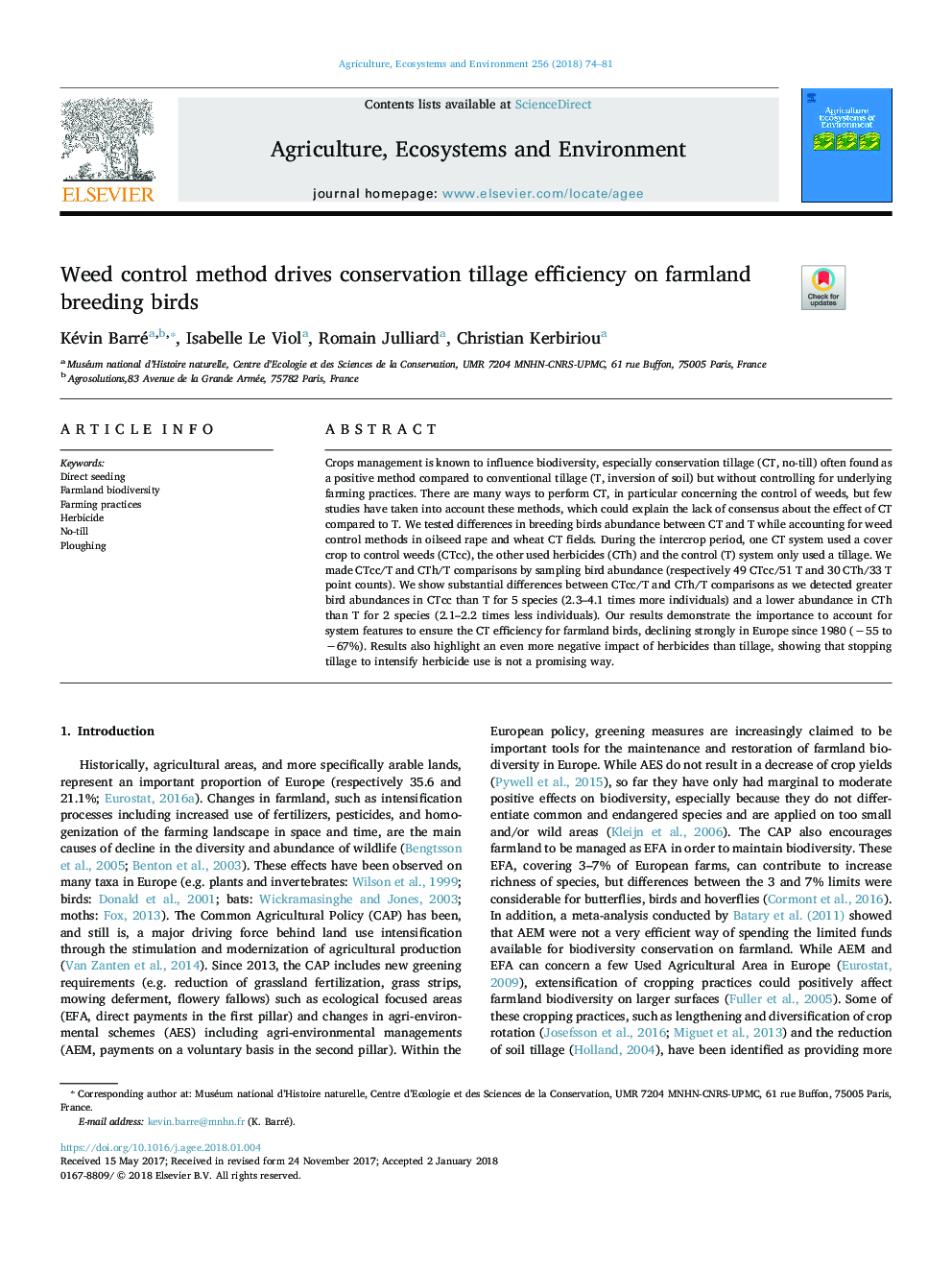| Article ID | Journal | Published Year | Pages | File Type |
|---|---|---|---|---|
| 8487160 | Agriculture, Ecosystems & Environment | 2018 | 8 Pages |
Abstract
Crops management is known to influence biodiversity, especially conservation tillage (CT, no-till) often found as a positive method compared to conventional tillage (T, inversion of soil) but without controlling for underlying farming practices. There are many ways to perform CT, in particular concerning the control of weeds, but few studies have taken into account these methods, which could explain the lack of consensus about the effect of CT compared to T. We tested differences in breeding birds abundance between CT and T while accounting for weed control methods in oilseed rape and wheat CT fields. During the intercrop period, one CT system used a cover crop to control weeds (CTcc), the other used herbicides (CTh) and the control (T) system only used a tillage. We made CTcc/T and CTh/T comparisons by sampling bird abundance (respectively 49 CTcc/51 T and 30 CTh/33 T point counts). We show substantial differences between CTcc/T and CTh/T comparisons as we detected greater bird abundances in CTcc than T for 5 species (2.3-4.1 times more individuals) and a lower abundance in CTh than T for 2 species (2.1-2.2 times less individuals). Our results demonstrate the importance to account for system features to ensure the CT efficiency for farmland birds, declining strongly in Europe since 1980 (â55 to â67%). Results also highlight an even more negative impact of herbicides than tillage, showing that stopping tillage to intensify herbicide use is not a promising way.
Related Topics
Life Sciences
Agricultural and Biological Sciences
Agronomy and Crop Science
Authors
Kévin Barré, Isabelle Le Viol, Romain Julliard, Christian Kerbiriou,
